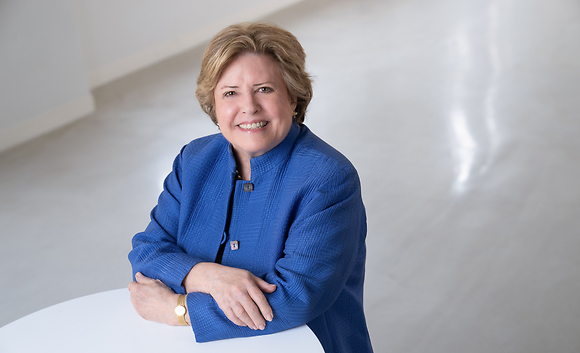UPDATED: Year-End Charitable Giving Ideas: IRA Rollovers and "Bunching" Charitable Deductions
Recent tax law changes amplify the benefits of two different charitable giving ideas: (1) “bunching” charitable giving to maximize deductions and (2) making a charitable IRA rollover. First, donor-advised funds offer the opportunity to “bunch” charitable deductions into a single year to better take advantage of the higher standard deduction available under the 2017 Tax Act. Second, a charitable IRA rollover allows donors over the age of 70½ to make significant charitable contributions using funds from individual retirement accounts ("IRAs"). Donors may find it advantageous to utilize these charitable giving techniques before the end of the year.
I. Charitable Giving Using Donor-Advised Funds
For 2018 the standard deduction is $24,000 for a married couple ($12,000 for a single individual or a married person filing separately). With the deduction for state and local taxes limited to $10,000 per year, many taxpayers who have traditionally itemized deductions will no longer find it advantageous to do so. If charitable contributions can be “bunched” into a single year, an overall tax benefit will be produced. While you could “bunch” deductible contributions by making large contributions directly to your favorite charities this year and then forgoing contributions in future years, making those contributions through a donor-advised fund may provide a more palatable alternative.
For example, suppose that Lydia and Lawrence traditionally give $20,000 per year to charity. After enactment of the 2017 Tax Act, their only deductible items are $10,000 of state and local taxes and $20,000 of charitable contributions. If they continue to give at that level over the years that the Tax Act provisions are in effect (through 2025), they will have deductions over that eight-year period of $240,000. Alternatively, Lydia and Lawrence could transfer $160,000 of assets to a donor-advised fund in 2018. In each year from 2018 through 2025, they will request distributions from their donor-advised fund to their favorite charities at the rate of $20,000 per year. In 2018, Lydia and Lawrence will itemize deductions and take a deduction for $170,000 ($10,000 of state and local taxes plus $160,000 for charitable contributions). In each year from 2019 through 2025, Lydia and Lawrence will take the standard deduction of $24,000 for a married couple. In total, over the eight years, they will be able to deduct $338,000. Thus, by putting eight years of charitable contributions in a donor-advised fund this year, they will increase their overall deductions for the period by nearly $100,000.
A. Limitations
Lydia and Lawrence must have sufficient adjusted gross income to be able to deduct the entire lump sum charitable contribution to the donor-advised fund in the year the contribution is made to take full advantage of this technique.
II. Charitable Giving Through IRA Rollovers
The Internal Revenue Code allows an individual age 70½ or older to make a tax-free "qualified charitable distribution" (in the form of a rollover) of up to $100,000 per year from an IRA to a qualified charity. As a result, an individual can avoid paying income tax on an otherwise taxable distribution from an IRA by instructing the IRA trustee to make the distribution directly to a qualified charity. A qualified charitable distribution can satisfy all or part of the donor’s required minimum distribution for the year.
A. Who May Benefit
The charitable IRA rollover provision may benefit you if you are age 70½ or older. First, the rollover provision could be beneficial if your charitable contribution deduction is limited by your adjusted gross income. Qualified charitable distributions from an IRA are treated as tax-free distributions to charity, so you can make distributions to qualified charities directly from an IRA even if you already made deductible charitable gifts equal to or in excess of the applicable percentage limitation. Second, the rollover provision may benefit you if you otherwise are not planning to itemize deductions. By making qualified charitable distributions from an IRA, you can benefit from the increased standard deduction under the 2017 Tax Act while continuing to support your favorite charities. You can make qualified charitable distributions from an IRA without increasing your taxable income or itemizing deductions.
B. Limitations
If you decide to take advantage of the charitable IRA rollover provision, you should confirm in advance that your intended charity satisfies the applicable qualification rules. Some section 501(c)(3) organizations that are otherwise eligible to receive deductible charitable contributions from donors – such as donor-advised funds, supporting organizations, and private non-operating foundations – are not eligible to receive qualified charitable distributions from an IRA. Also, the rollover provisions only apply to charitable contributions that would otherwise be wholly deductible, for example, those for which there is no benefit received in exchange for the contribution and all otherwise applicable substantiation requirements are met. Separately, anyone making qualified rollover distributions should be aware that those distributions may be subject to state income tax.
III. Conclusion
Provisions in the 2017 Tax Act make both charitable IRA rollovers and bunching of charitable contributions through the use of a donor-advised fund beneficial for certain donors. For more information, please contact a member of Caplin & Drysdale’s Private Client Group:
|
Beth Shapiro Kaufman |
Anne J. O’Brien |
William D. Fournier |
|
Megan E. Wernke |
Alison F. Egan |


